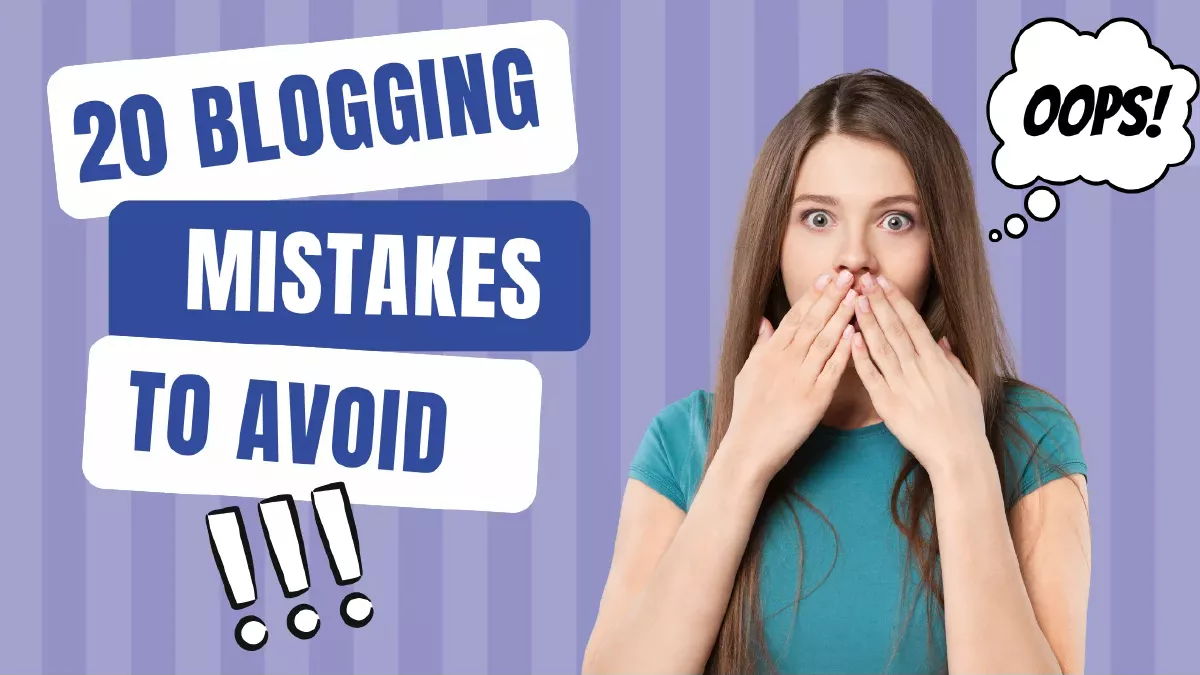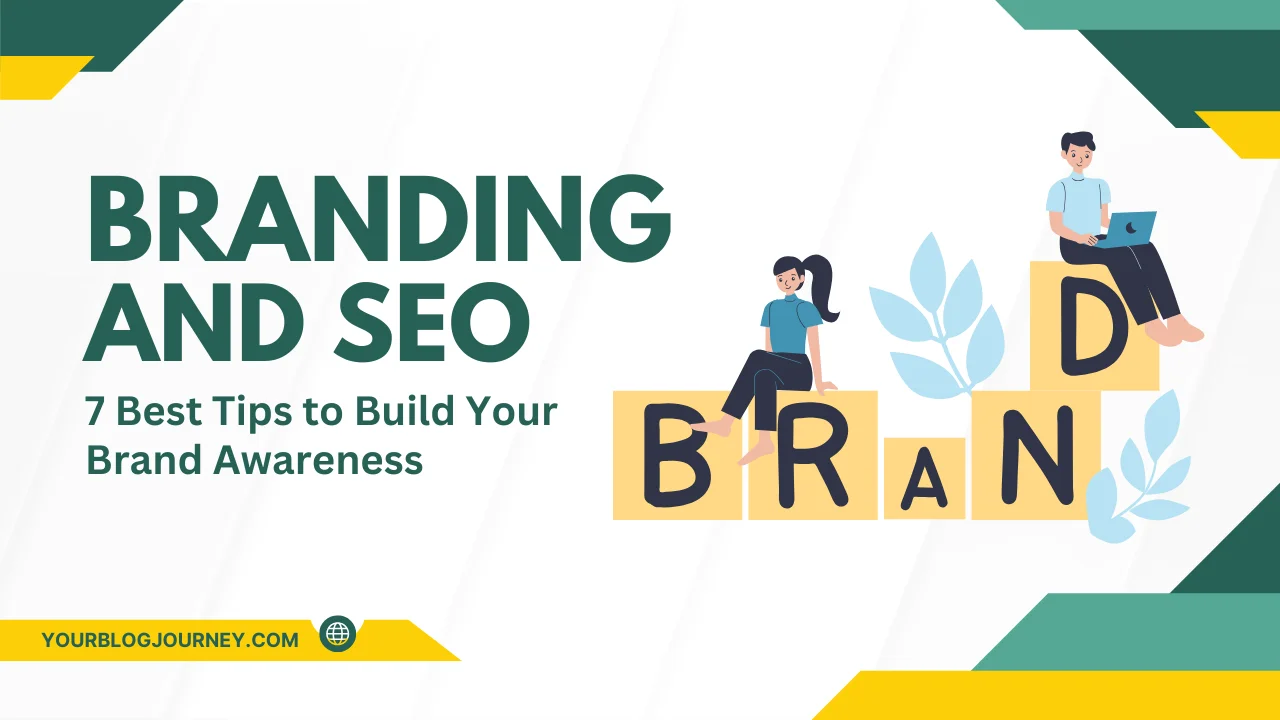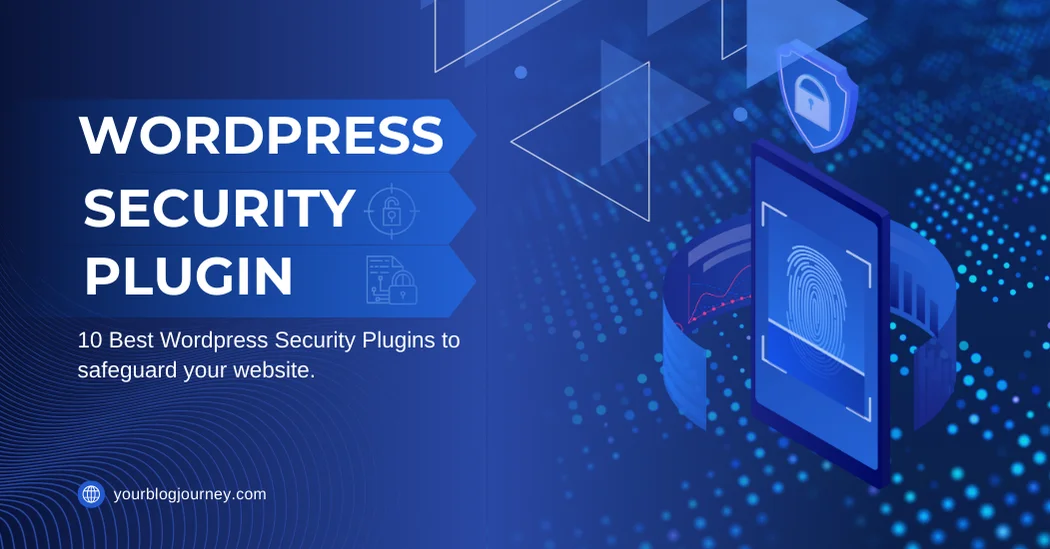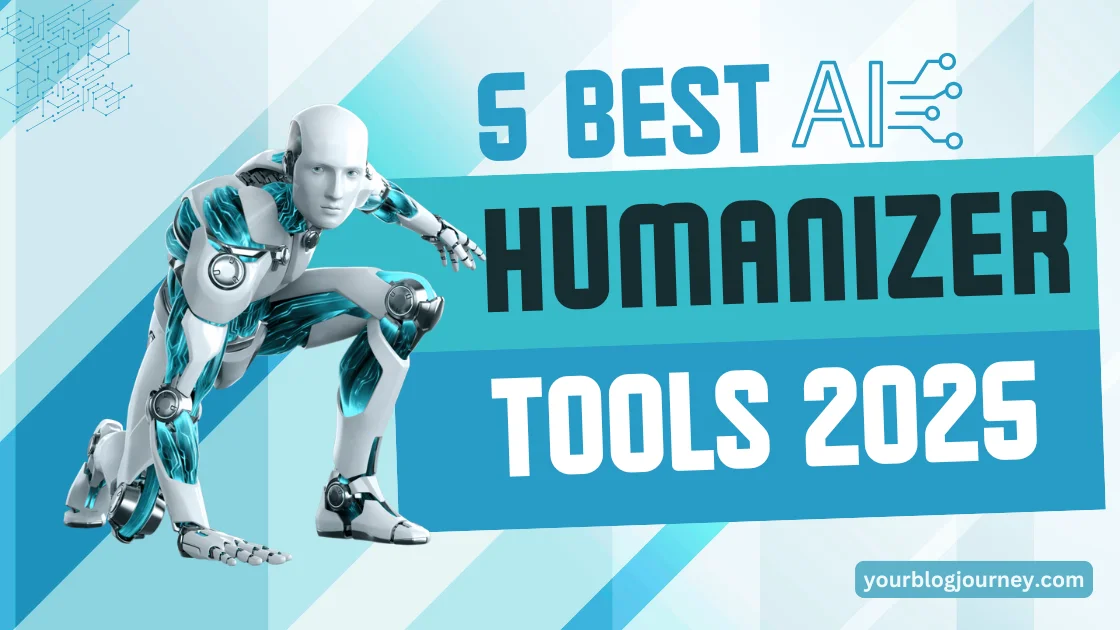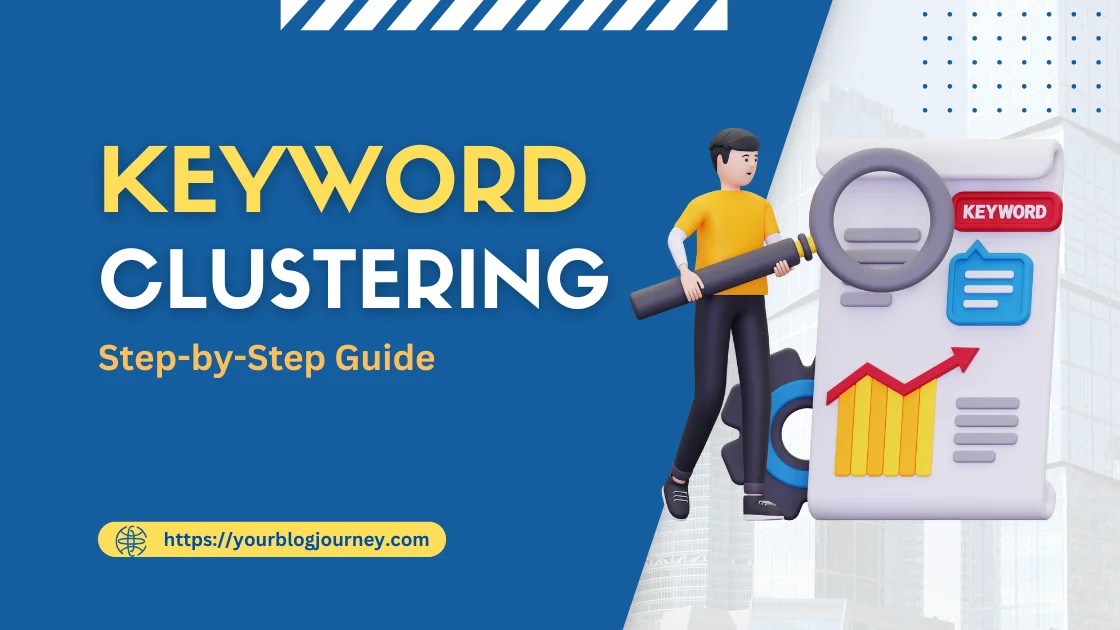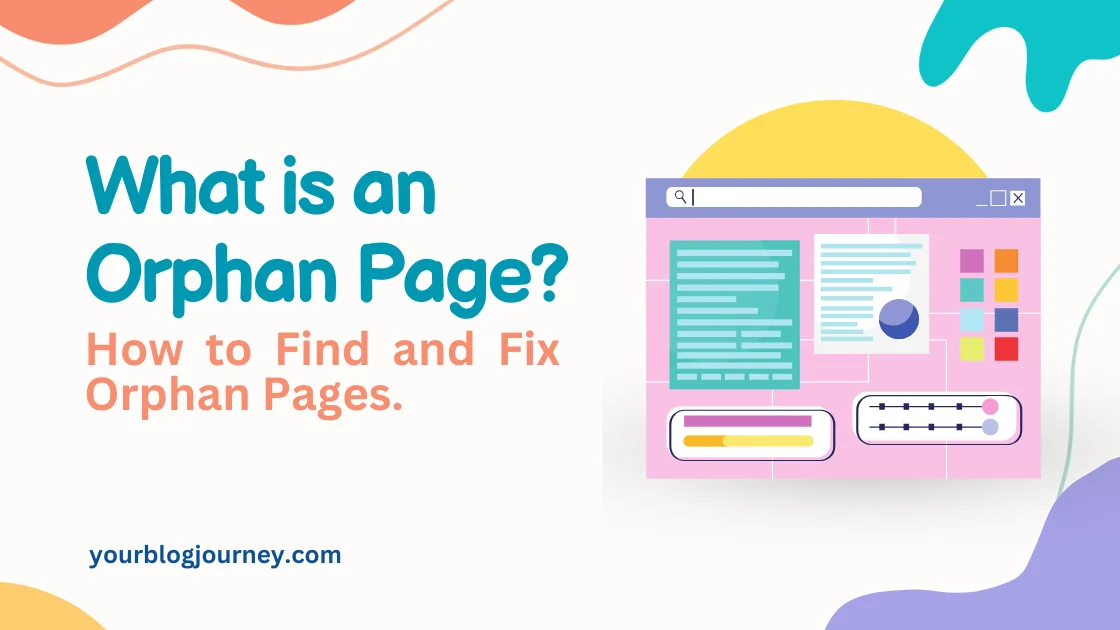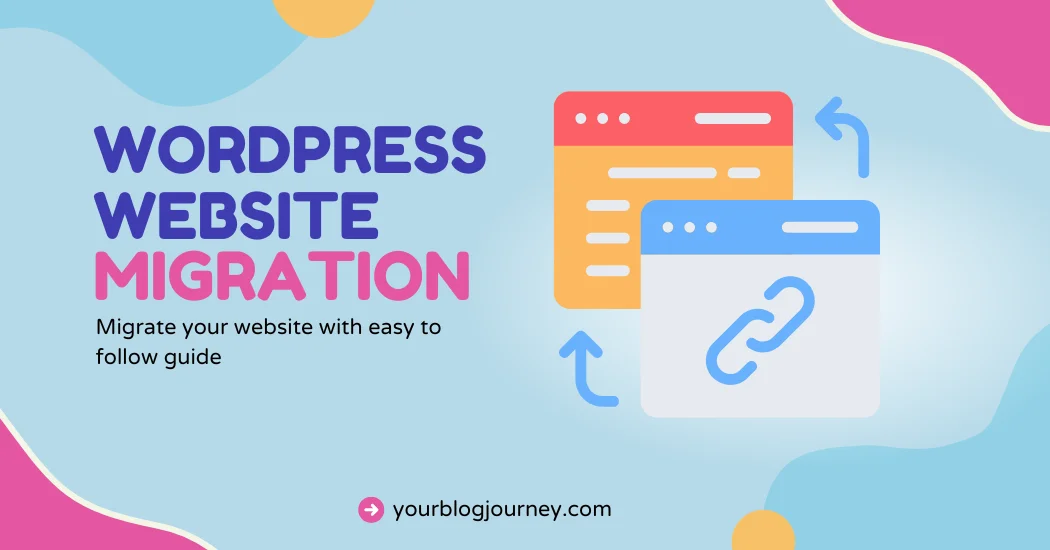Starting a blog is exciting, but what if your efforts are lost because of common blogging mistakes? Imagine putting hours into blog content, only to see little traffic. It’s frustrating!
But don’t worry, many beginner bloggers face this, and with a few simple fixes, you can avoid these blogging mistakes to achieve better results. This guide will walk you through the top 20 blogging mistakes to avoid and help you reach more readers.
“Your blogging journey is shaped by the lessons you learn from mistakes. Keep creating!”
Top 20 Blogging Mistakes To Avoid
This list of the top 20 blogging mistakes to avoid will help you attract more readers, improve your SEO, and build a blog that stands out.
Whether you’re new to blogging or have some experience, these tips will guide you in the right direction and make your blogging efforts more effective. Let’s learn together!
Blogging Planning & Strategy Mistakes
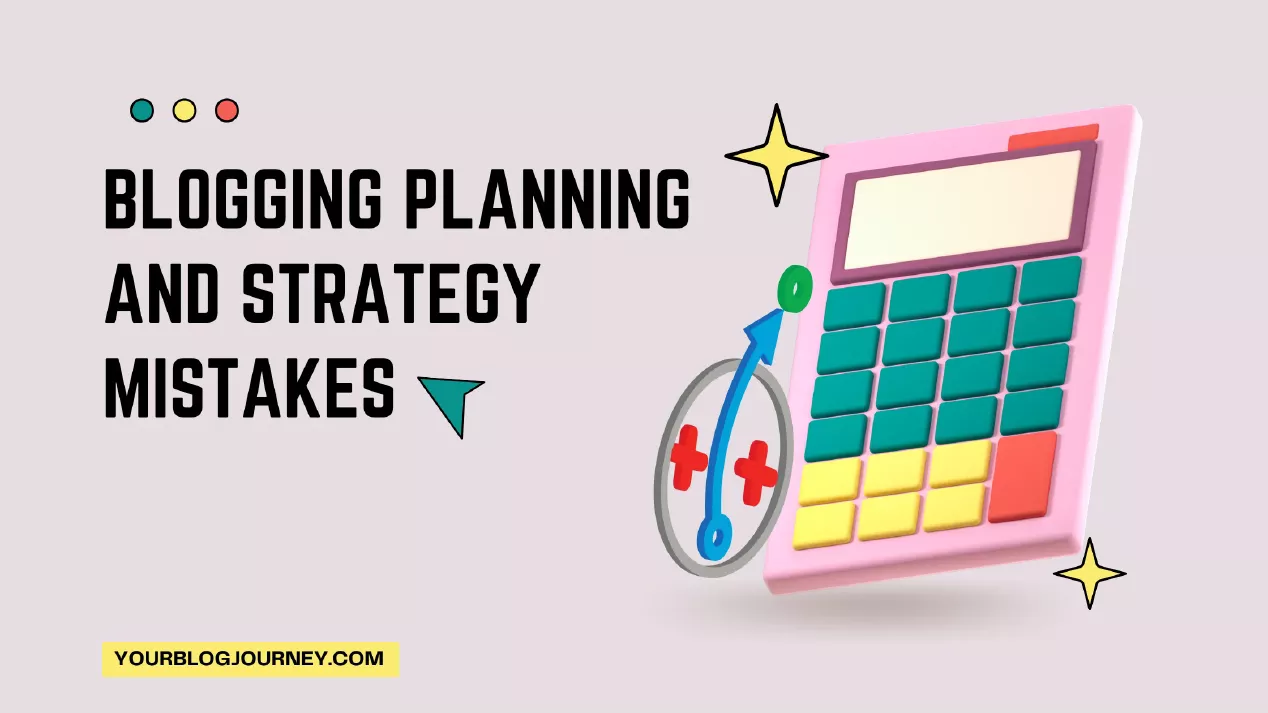
Planning and strategy are the foundation of any successful blog. Many new bloggers skip essential steps like keyword research or defining their target audience, which limits their blog’s growth.
This section covers common planning and strategy mistakes to help you start with a strong foundation and attract the right readers.
1. Skipping Keyword Research and SEO Planning
One of the biggest blogging mistakes is ignoring keyword research. Keywords are like signposts that direct readers to your blog. Without the right keywords, your blog content may never reach your target audience.
Use tools like Google’s Keyword Planner, Ahrefs or Semrush to find keywords that fit your blog’s topic. The right keywords boost your chances of ranking higher in search engine results pages.
Read this article to learn the 10 useful tips on how to write a compelling article.
2. Not Defining Your Target Audience
Writing without knowing your target audience is like speaking to an empty room. When you define your audience, you can tailor content to what they care about.
Ask yourself: Who will find this post helpful? Knowing your audience helps in creating a successful blog with content that readers will find valuable.
3. Not defining a clear niche
Not defining a clear niche is a common blogging mistake that can limit your blog’s success. When you write about too many topics, it can confuse readers and make your blog seem unfocused.
A well-defined niche helps attract a targeted audience interested in specific topics. For example, if your niche is “healthy recipes,” readers will know exactly what to expect, making them more likely to return. Focus on one area, and you’ll see stronger growth and engagement.
4. Failing to Refresh Old Content
Many blogs have hidden “gold” in their old content. Updating old blog posts can improve your SEO and attract new traffic. Check which posts need fresh information or better keywords.
By keeping old content relevant, you keep readers engaged and improve your blog’s ranking. After helpful content updates, it has been proved in several case studies that regular updation of content can improve your site ranking.
5. Overlooking Quality over Quantity
Posting too frequently without focusing on quality is a common mistake. High-quality content stands out, while low-quality posts can hurt your reputation.
Aim to publish content that offers real value, even if it means posting less often. Remember, it’s quality that keeps readers coming back.
Content Creation Mistakes
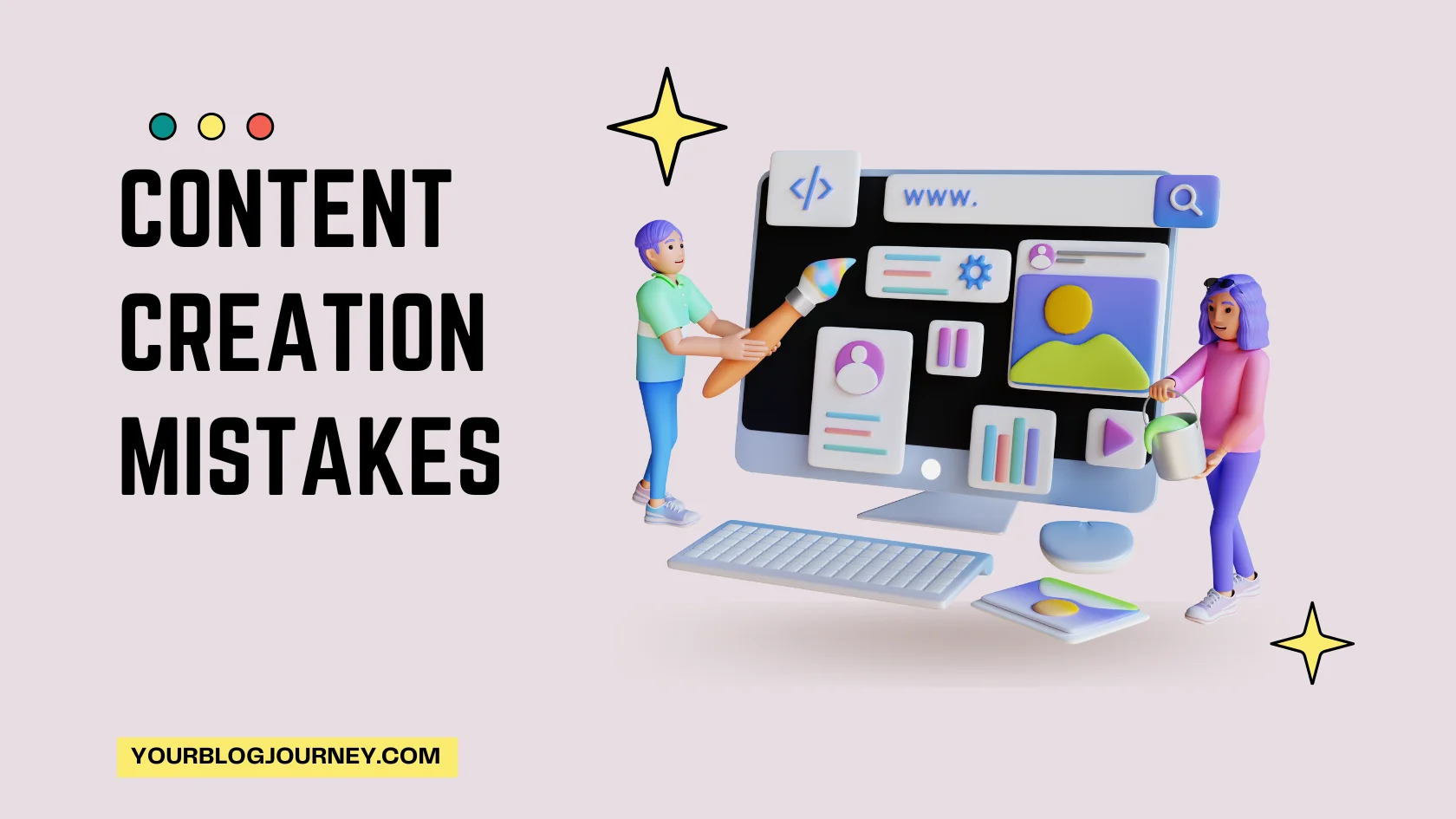
Creating good content is key to a successful blog, but common mistakes can make readers lose interest. Long paragraphs, poor titles, and ignoring SEO basics can hurt your blog’s chances.
This section will help you avoid these content mistakes and keep your readers engaged.
6. Not Crafting Catchy Titles for Blog Content
Titles are the first thing readers see, so make them engaging. A good title makes readers want to click. Use keywords and keep titles clear and catchy.
Try titles like, “10 Easy Ways to…” or “The Ultimate Guide to…” that catch attention and promise value.
7. Using Long Paragraphs and No Subheadings
Long paragraphs make readers feel overwhelmed. Keep paragraphs short—not more than 3 lines.
Use subheadings to break up content so readers can scan and find what they need quickly. This improves user experience and keeps readers on your page longer.
8. Neglecting SEO Basics and Best Practices
Ignoring SEO is one of the most common blogging mistakes. SEO basics like using keywords, adding alt text to images, and optimizing headings help your blog appear in search results. Make sure you’re following best practices to improve your chances of ranking.
9. Keyword Stuffing – Common Blogging Mistake
Overusing keywords, or “keyword stuffing,” is a blogging mistake that can hurt your SEO. Instead, focus on placing keywords naturally throughout your content. This helps you rank without making your content hard to read.
10. Skipping Internal Links to Boost Your Blog
Internal links connect readers to other posts on your blog. This helps with SEO and keeps readers exploring more of your content. When you mention a related topic, add a link to a relevant post to give readers a fuller experience on your blog.
Further, also keep checking broken links of your blog. This free WordPress plugin – Broken Links Checker will help you in finding out all the broken links of your website.
Blog Promotion & Audience Engagement Mistakes
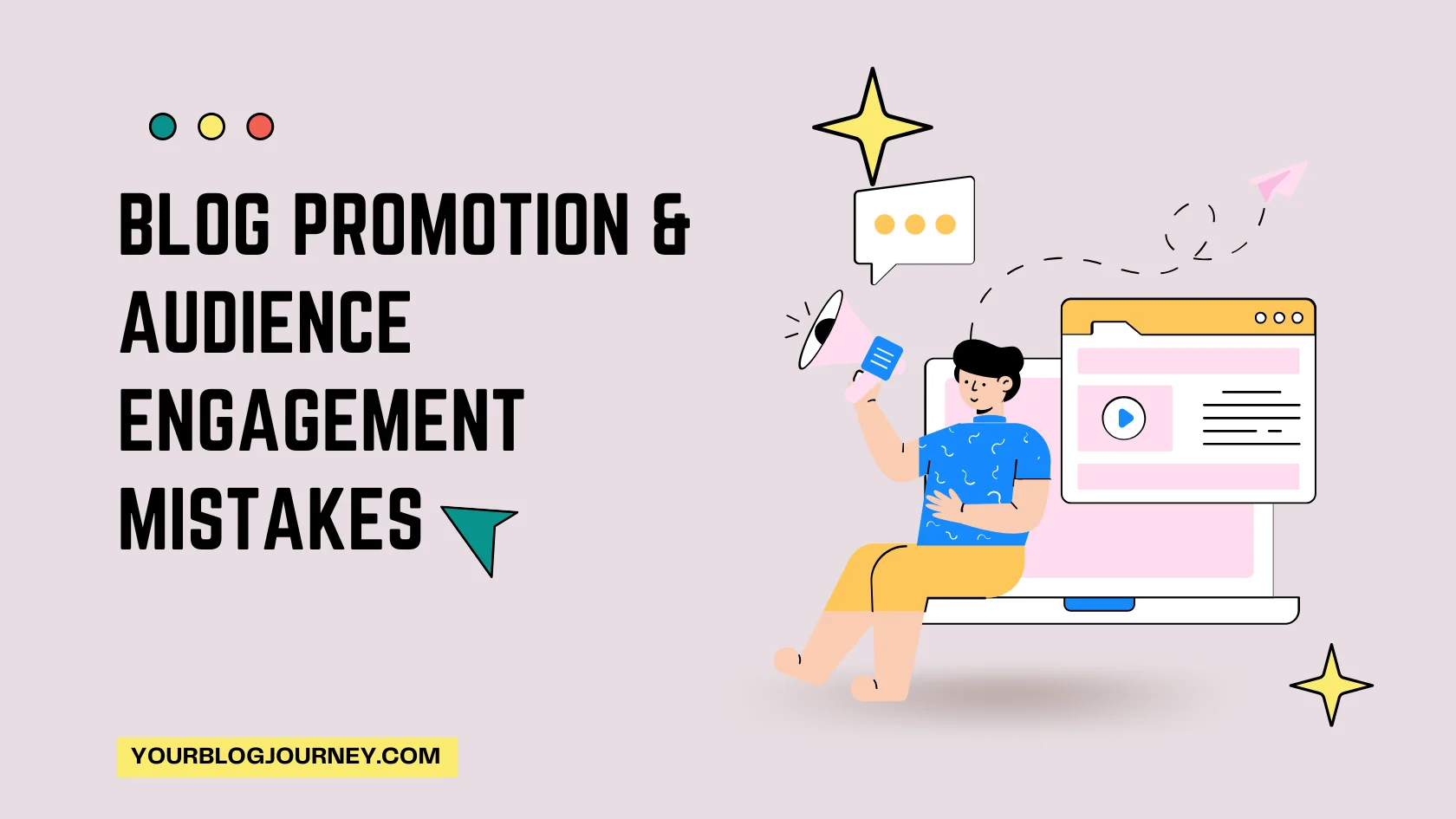
Promoting your blog and engaging with readers are important for growth. Many bloggers skip steps like using social media or responding to comments, missing out on valuable connections. This section covers easy ways to promote your blog and build a loyal audience.
11. Ignoring a Newsletter Strategy
Email marketing is a powerful way to connect with your audience. Starting a newsletter keeps readers updated and brings them back to your blog.
It’s easy to begin, just offer readers a free guide or helpful tips in exchange for their email. Consistent newsletters keep your readers engaged and build a loyal audience.
12. Ignoring Social Media Platforms
Ignoring social media platforms is a big mistake many bloggers make. Social media is a powerful tool to reach more people and grow your blog. By sharing your blog posts on sites like Facebook, Twitter, and Instagram, you can attract new readers.
Social media helps spread your content quickly and lets you engage with your audience directly. Plus, it’s a great way to build a community around your blog.
Don’t miss the chance to reach more people, share each blog post on social media, and you’ll see your audience and traffic grow over time.
13. Missing Community Engagement
Readers’ comments show they’re interested in your content. Not responding to comments can make your blog feel unwelcoming. Engage with readers in the comments to create a friendly community around your blog.
Community engagement also provides valuable feedback, helping you understand what topics interest your audience the most. This simple interaction makes your blog more welcoming and boosts reader loyalty.
14. Lack of a Clear Content Strategy
Not having a clear content strategy is a mistake that can make blogging harder. A content strategy is a plan for what you will write about and when you will post it. Use Content Planners to organize your content.
A content strategy keeps your blog focused and helps you cover topics that interest your audience. It also makes posting regularly easier, so readers know when to expect new content. With a clear strategy, your blog has a better chance of growing successfully.
“A great blog doesn’t happen overnight. Mistakes are part of the journey.”
Technical & SEO Mistakes
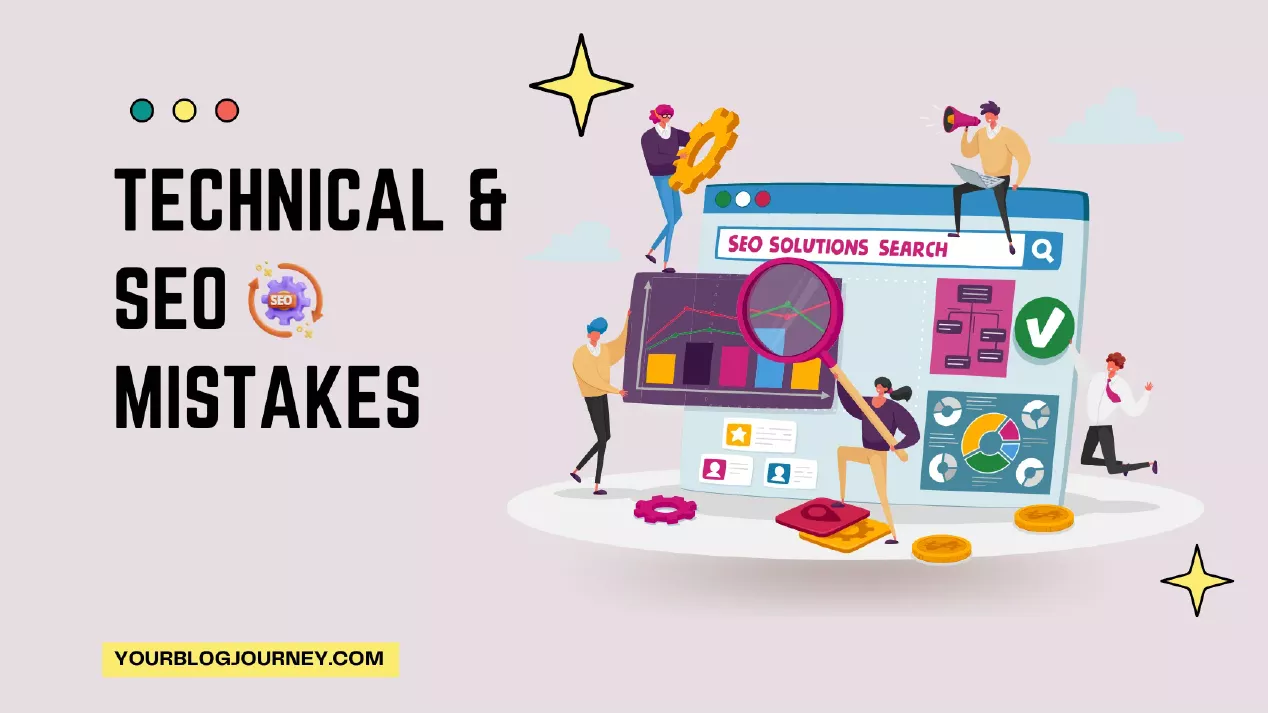
Technical and SEO mistakes can hold your blog back, even if you have great content. SEO, or Search Engine Optimization, helps search engines find and rank your blog.
Ignoring SEO basics like using keywords, adding alt text to images, and linking to other pages can lower your chances of being seen in search results. Let’s check these mistakes in this section:
15. Failing to Add External Links for Better SEO
Adding external links to credible sources adds value to your blog content. It shows search engines that you provide well-researched information. Further, you are helping your audience by providing useful links, which can save their lot of browsing time.
Whenever possible, link to trusted sites related to your topic. This is a simple way to boost your blog’s SEO.
16. Forgetting Mobile Optimization
Many readers browse on their phones. If your blog isn’t mobile-friendly, it can be hard for them to read. Make sure your blog is responsive, so it adapts to mobile screens. This improves user experience and can even boost your SEO.
If your blog isn’t mobile-friendly, readers might find it hard to navigate or read, and they may leave quickly. Mobile optimization means making sure your images, text, and layout adjust properly on phones and tablets.
17.Not Using Google Analytics to Track Blog Performance
Not using Google Analytics to track your blog’s performance is a mistake that can leave you in the dark. Google Analytics is a free tool that shows how people interact with your blog.
It lets you see which posts are popular, where your readers come from, and how long they stay. By tracking these details, you can understand what works and what doesn’t. This information helps you improve your content, attract more visitors, and grow your blog.
18. Skipping Alt Text for Images
Alt text, or “alternative text,” is a short description of an image that helps search engines understand what the image is about. Adding alt text can improve your SEO, making it easier for people to find your blog through image searches.
Alt text helps search engines index your images and improves accessibility. When adding an image, include a brief description in the alt text. This is a small SEO boost and makes your blog more inclusive for visually impaired readers.
19. Not Submitting a Sitemap for Better Indexing
Not submitting a sitemap is a mistake that can make it harder for search engines to find your blog. A sitemap is a file that lists all the pages on your blog, helping search engines like Google understand your site’s structure.
When you submit a sitemap through Google Search Console, it makes it easier for search engines to index your blog, so your content can show up in search results.
20. Ignoring Site Loading Speed
Ignoring loading speed can hurt your blog’s user experience and make visitors leave quickly. A slow-loading blog also affects your ranking on search engines, as Google favors faster sites.
Improving loading speed by compressing images, using fewer plugins, and enabling caching can make a big difference. Faster loading keeps visitors on your blog longer, helping to increase traffic and engagement.
Don’t let a slow site turn readers away—optimizing your loading speed creates a better experience and helps your blog perform well.
Conclusion
“The best bloggers aren’t perfect; they just keep learning from their mistakes.”
By avoiding these common blogging mistakes, you set your blog up for success. Remember, even if mistakes happen, take it as an opportunity to learn and improve. Use these helpful tips to avoid pitfalls, grow your traffic, and make your blog the best it can be.
Stay consistent, and don’t forget to enjoy the blogging journey!
Read this article to learn important tips on Blogging consistency, which is the mantra of Blogging success.
FAQ
Ans: Common blogging mistakes include neglecting SEO, ignoring social media, not engaging with readers, and failing to do keyword research. Each of these can limit your blog’s growth.
Ans: To avoid mistakes, start with a clear content strategy, do keyword research, and follow SEO best practices. Engaging with your audience and promoting on social media are also key.
Ans: Yes, keyword research helps you reach your target audience by showing you what topics they’re searching for. This improves your chances of ranking higher in search engine results.
Ans: Update old content at least once a year or when new information becomes available. This keeps your blog content relevant and can boost your SEO.
Ans: A newsletter is highly recommended. It keeps readers connected and updated on your latest posts, helping you build a loyal audience.

